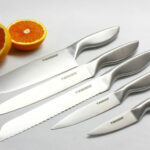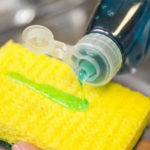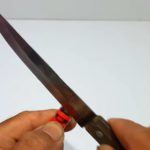Many people would opt to spend money on sharpening their kitchen knives or even purchasing new ones when faced with dull blades. But this can be quite wasteful. Today, let me share with you a simple and effective trick to keep your knives sharp without the need for a whetstone.
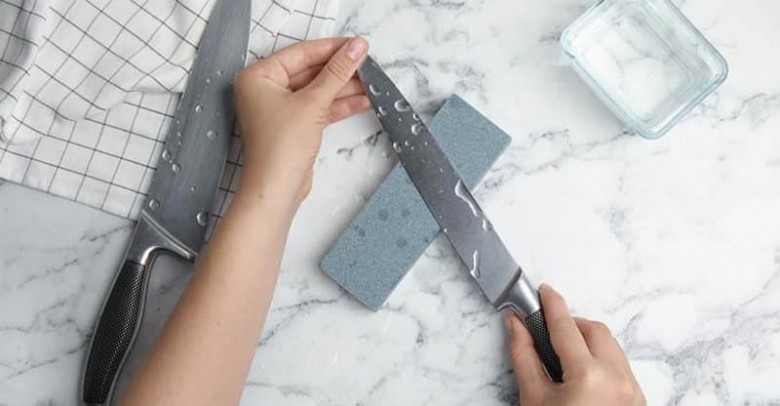
First, we need to prepare a ceramic bowl or plate. Turn it over, and you’ll notice a circular pedestal in the center. This part will act as our sharpening stone.
Combine some salt, a bit of toothpaste, and an appropriate amount of white vinegar on this pedestal, and then mix it all together.
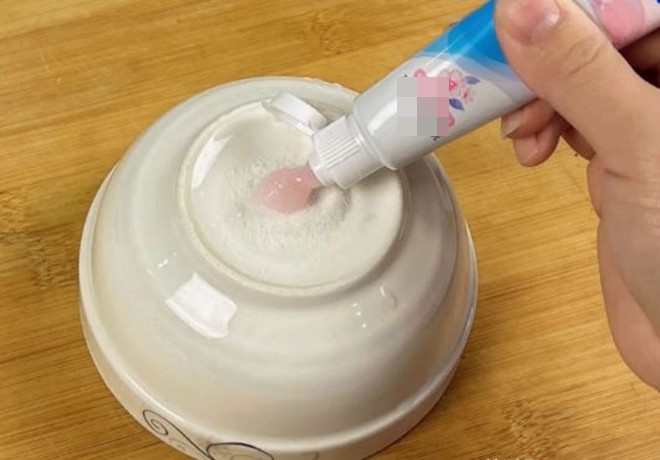
Salt can activate the steel, toothpaste contains abrasive substances that increase friction, and acetic acid in white vinegar effectively removes rust from knives.
Next, dip a sponge into this homemade solution and apply it to your knife’s blade.
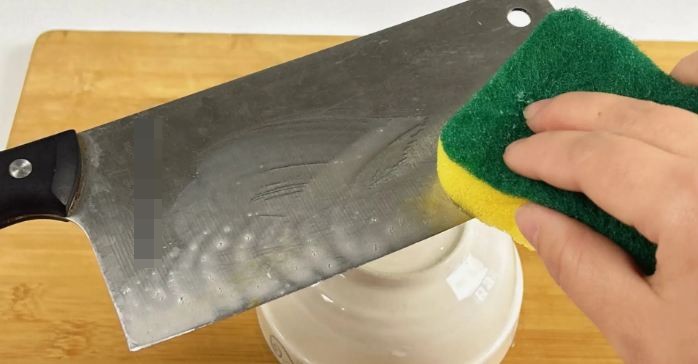
After that, sharpen your knife on the circular pedestal of the ceramic bowl, moving in one direction only. Remember, you must sharpen in a single direction without going back and forth. Sharpen each side for about 3 minutes, and you’ll find your knife as good as new.
Additionally, when sharpening, it’s important to tilt the knife slightly, at about a 10-degree angle. If you sharpen horizontally or with a smaller angle, the knife’s edges will become thinner and more prone to chipping when cutting hard food items. Conversely, a larger angle will result in a thicker edge, leading to quicker dulling. A 10-degree angle strikes a good balance between sharpness and durability.
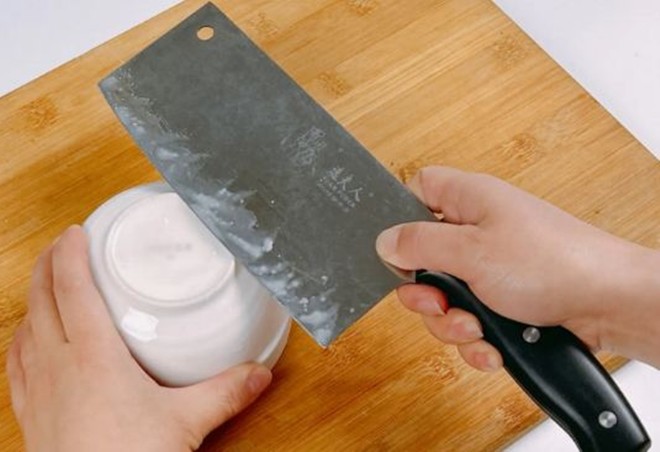
With this simple method, you’ll find your kitchen knives incredibly sharp, making food preparation a breeze.
This technique is not only simple and easy to execute, but it’s also cost-effective and perfect for daily use at home. Regular and proper sharpening will ensure the longevity of your knives and make your culinary endeavors much more enjoyable.
Now, if your knives have rusted due to prolonged periods of non-use or improper storage, you can use rice water. The starch and minerals present in the water from rinsing rice are effective in removing rust.
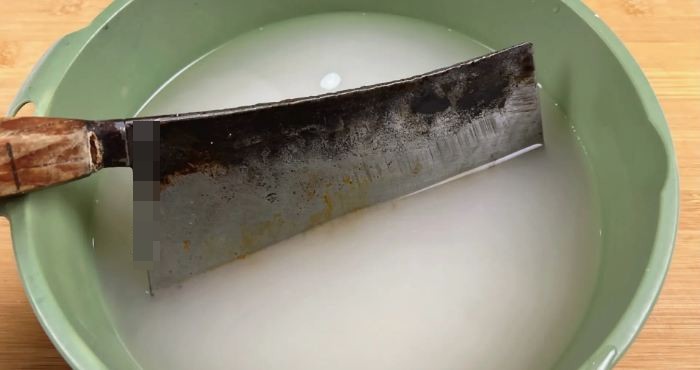
First, remove any oil residue on the knife, as this can create a protective layer that hinders the rust removal process. Then, soak the rusty knife in rice water for at least 3 hours.
Finally, take the knife out of the rice water and rinse it with clean water. You’ll be amazed to see the rust disappear, leaving your knife looking brand new.
The Ultimate Guide to Knife Care: Cleaning and Maintenance
Introducing the ultimate guide to knife care and maintenance! Knives are an essential tool in any kitchen, but do you know how to keep them in top condition? With our expert tips, you’ll learn the secrets to proper knife cleaning and storage, ensuring your knives stay sharp and pristine. From preventing rust to mastering the perfect edge, we’ll take you through the ins and outs of knife care, so you can chop, slice, and dice like a pro. Stay tuned for the ultimate upgrade to your kitchen skills!
The Secret to Using Old Lighters to Sharpen Your Knife with Speed and Precision
“A sharp knife is a chef’s best friend, and a well-maintained knife is the secret to a seamless cooking experience. While knives are essential in every kitchen, they require proper care to stay in prime condition. Over time, they can become dull and less effective, but fear not! We’ve got an unusual yet effective hack to sharpen your knives using a simple, old-school lighter. Stay tuned as we reveal this intriguing trick to transform your dull blades into cutting powerhouses!”

























